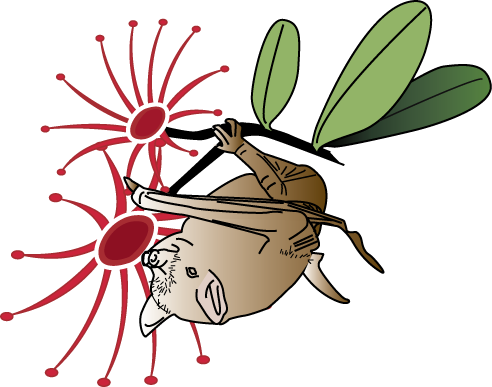The Roosting Ecology of Insectivorous Bats in Road Structures in Urban Brisbane
Vanessa Gorecki
The roosting ecology of insectivorous bats in road structures in urban areas has received limited research. The demand for science-based decision making in relation to managing insectivorous bats in road structures will only increase as pressures of urbanisation and associated vehicular traffic increase.
There are four key questions underlying this project:
1. Can landscape attributes be used to determine the spatial distribution of insectivorous bats within road structures in suburban Brisbane?
Identifying landscape attributes that determine the spatial distribution of insectivorous bats within road structures in suburban Brisbane may enable prediction of the likelihood of insectivorous bat roosts within road structures prior to works. This will provide greater conservation outcomes for insectivorous bats roosting in road structures, create cost savings for road managers and strengthen science-based decision making during project planning to enable road managers to avoid impacts on insectivorous bats roosting in road structures.
2. What are the roost characteristics being favoured by insectivorous bats within road structures?
The loss of roosting habitat is regularly seen to be mitigated by the provision of a wooden nest box installed within the vicinity of the original roost site. However, the microhabitat conditions provided by a nest box are not comparable to crevices provided within road structures. The efficacy of the design and lay-out of compensatory measures is largely unknown and no studies have identified the characteristics of roost sites within road structures used by roosting insectivorous bats. This study will record roost site attributes to determine which attributes insectivorous bats are favouring. This information will guide the design of artificial habitat.
3. What is the roost-switching behaviour of a colonial roost group of insectivorous bats in suburban Brisbane?
Radio-tracking and the use of Passive Integrated Transponder tags (PIT tags) will provide insight into roost-switching behaviours of insectivorous bats living within road structures. This information will strengthen science-based decision making in regards to the value of a particular roost site within a road structure. This knowledge will enable road managers to have greater confidence in deciding on appropriate management, and timing, of construction activities which impact on roost sites.
4. What is the genetic relationship between colony members and local outgroups?
Mitochondrial DNA analysis provides an insight into the degree of relatedness between females (female lineages or matriarchal hierarchies) and also the relationship of resident males to the female maternity group. This information will strengthen science-based decision making in regards to the importance of a particular colony, including maternity colonies, within a road structure. This knowledge will enable road managers to have greater confidence in selecting appropriate management actions in regards to timing of construction activities which impact on maternity roost sites.
